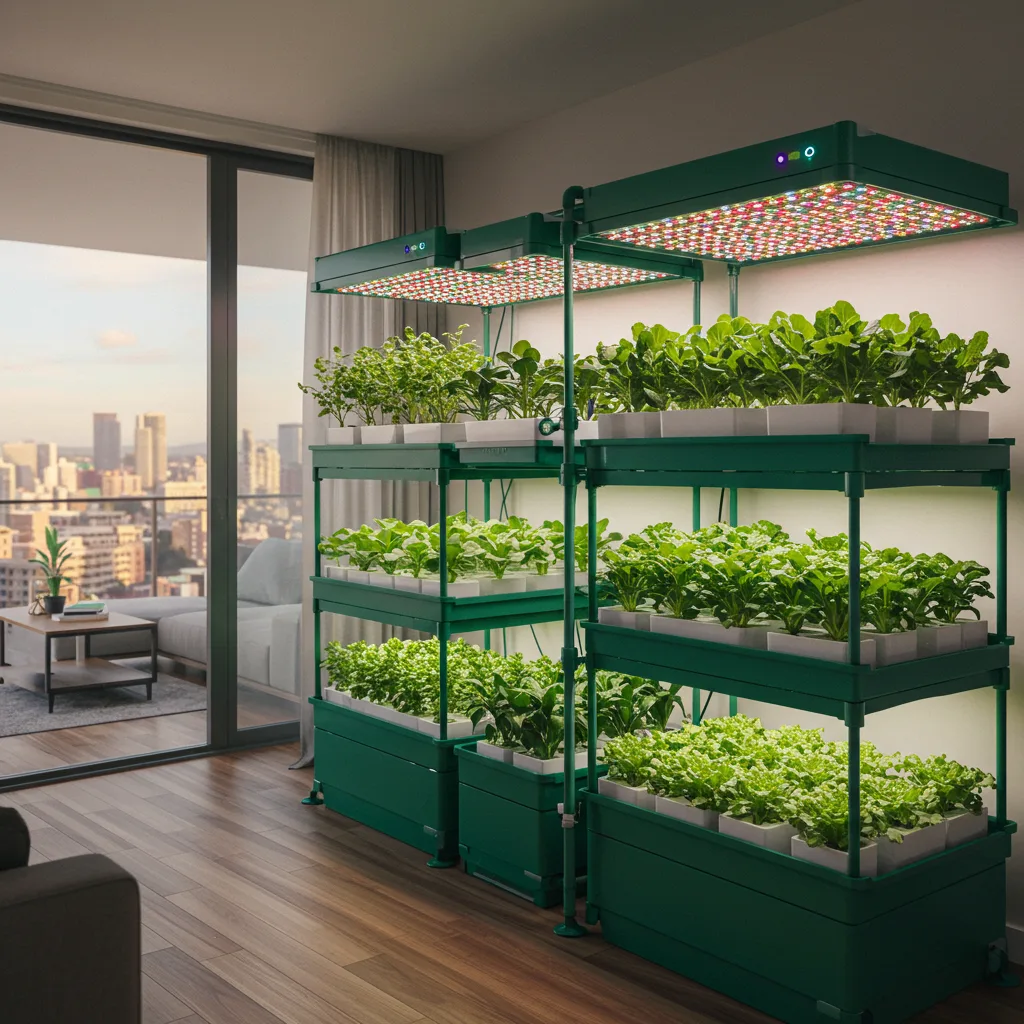Deep Dive: DIY Hydroponic Gardening for Urban Apartments in 2025
DIY Hydroponic Gardening introduces urban dwellers to soilless, water-efficient cultivation, yielding fresh produce year-round in tight spaces. USDA data confirms hydroponic systems can reduce water usage by up to 90%, and EPA research demonstrates their positive impact on reducing stormwater runoff. Check out our Hydroponic Basics for foundational concepts.

DIY Hydroponic Gardening Advantages & Benefits of Urban Hydroponics
Key Environmental & Economic Benefits
- Water Savings: Up to 90% less usage compared to soil gardening (NREL).
- Space Efficiency: Vertical hydroponics maximize yield in 30% of the footprint.
- Faster Growth: Nutrient film systems deliver 30–50% quicker harvest cycles.
- Local Food Security: Urban hydroponics minimize transport emissions and improve access.
- Year‑Round Harvest: Seasonal independence ensures continuous production.
DIY Hydroponic Gardening System Types & Indoor Hydroponic Systems
| System | Water Use (L/week) | Footprint (ft²) | Startup Cost (USD) | Monthly Yield |
|---|---|---|---|---|
| Deep Water Culture (DWC) | 10–15 | 1–2 | 80–120 | 6–8 lettuce heads |
| Nutrient Film Technique (NFT) | 8–12 | 1–1.5 | 90–150 | 8–10 salad servings |
| Ebb & Flow | 12–18 | 2–3 | 100–180 | 10 herb pots |
| Aeroponics | 5–8 | 1–2 | 150–250 | 12–15 microgreens trays |
DIY Hydroponic Gardening Implementation Steps for Apartment Hydroponics
Choose Your DIY Hydroponic System Type
Select from DWC, NFT, ebb & flow, or aeroponic setups based on budget, space constraints, and targeted yield.
Procure Quality DIY Hydroponic Supplies
Gather essentials: reservoir, submersible pump, tubing, net pots, growing medium (coco coir or rockwool), and nutrient solution.
Assemble & Calibrate Your Urban Hydroponic Setup
Ensure airtight connections, calibrate pH to 5.5–6.5, and measure EC per manufacturer specs.
Install LED Lighting & Environment Control for Indoor Gardening
Position full-spectrum LEDs 12–16 hours daily; maintain ambient temperatures between 65–75°F (18–24°C).
Tip: Continuous Monitoring for Hydroponic Gardening
Use digital pH/EC meters and water-temperature probes to detect fluctuations early and keep growth consistent.
Germinate & Transplant in Your DIY Hydroponic System
Start seeds in starter plugs, transplant once roots emerge (7–10 days), and gently place them in net pots.
Maintain & Harvest Your Urban Hydroponic Garden
Top up nutrient solution weekly, replace completely every 4 weeks, and harvest mature greens at 4–6 weeks for continuous production.
DIY Hydroponic Gardening FAQs: Indoor & Vertical Hydroponics
What EC level is ideal for leafy greens?
Maintain an EC between 1.2–1.8 mS/cm for lettuce and herbs. See our EC & Nutrients FAQ.
How often should nutrient solution be replaced?
Fully replace every 4 weeks; top up weekly to prevent nutrient imbalances.
Is tap water suitable?
Tap water works if heavy metals are low; consider a carbon filter per EPA guidelines.
Conclusion: Embrace DIY Hydroponic Gardening in Urban Apartments
DIY hydroponic gardening offers efficient, year-round, pesticide-free produce for apartment dwellers. By leveraging soilless systems, precise monitoring, and best practices, you can transform any indoor space into a thriving micro-farm. Get started on our Getting Started page and share your hydroponic journey below!

